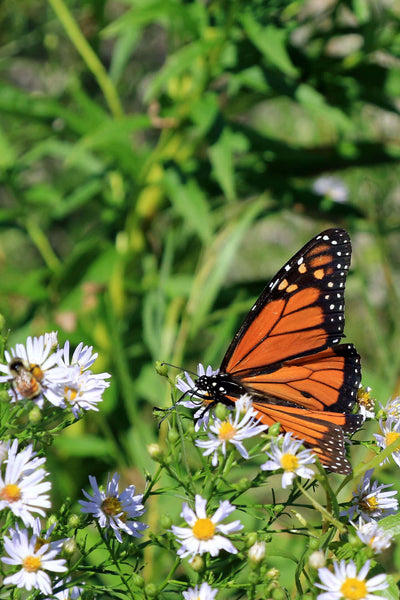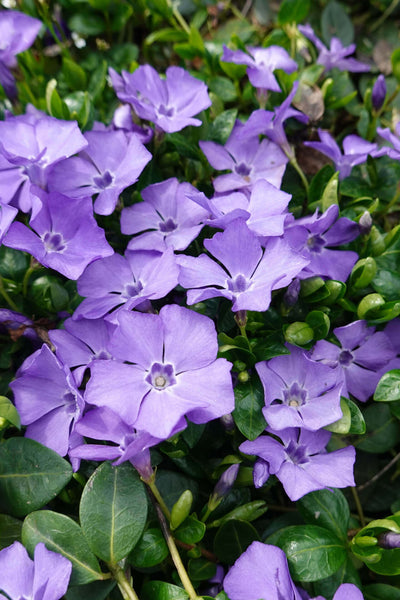Container Gardening is the best way to grow a lush, healthy garden almost anywhere if you love plants but don't have a lot of room. Learning how to do container gardening can help you bring nature to your balcony, patio or porch, whether you live in an apartment or condo or have a big yard but prefer flexible plant arrangements.
You can easily make lovely displays that draw pollinators and brighten your surroundings with the right containers for gardening, soil and plants like Monarch Pollinator Plants, Wild Geranium, or Periwinkle Plants.
Why Container Gardening Matters and Its Advantages
One of the most flexible and satisfying planting techniques is container gardening. You don't need big beds of soil to grow flowers, herbs, or even veggies in it. You can move pots around to get more sunshine, change the look, or keep plants safe from bad weather.
Some of the major advantages of container pot gardening include:
- It's flexible with space, so it's great for porches, patios, and small yards.
- When it's cold outside, move the bins inside. When it's warm, move them outside.
- It is easy to keep track of each plant's soil type, feeding, and nutrients.
- It looks nice; it adds colour and greenery to small or urban areas.
These container garden ideas for small spaces can help you garden in fun and unique ways if you don't have a lot of land. To add depth and visual interest, stack containers vertically, hang pots, or group plants of different sizes together.
Choosing the Right Container, Soil Location
For healthy plants, choosing the right containers for gardening is very important. To keep roots from rotting, the pot should have drainage holes and be big enough to hold plants. Depending on your style and the space you have, clay, pottery, wood, or recycled plastic pots will all work.
Pick a high-quality potting mix rather than yard soil when selecting soil for container pot gardening. Potting mixes don't weigh much and keep water in while letting air flow well.
Pro Tip: To improve the soil, add organic waste or slow-release fertiliser. Wild Geranium or Periwinkle Plants are two plants that Plants like dirt that drains well, has the right amount of nutrients, and stays just slightly damp.
Where: Put the bowls where they will get enough light. Plants that need 6 to 8 hours of sunshine should be in a sunny spot. Plants that like cooler, shady spots, like ferns and periwinkles, do best in the shade.
Best Plants for Container Gardening
The best plants for container gardening rely on how much light they get, how much space you have, and your design goals. If you want to be sure of success then try these favourites:
- Monarch Pollinator Plants: These are great for adding colour and drawing butterflies and bees.
- Wild geranium: A pretty, hardy natural plant that blooms in purple.
-
Periwinkle plants: Have violet-blue flowers and shiny green leaves that grow on the ground.
- Herbs: Rosemary, basil and mint do well in pots.
- Small shrubs or trees: These look great in big planters on patios.
These plants not only make small places look nicer, but they also help the local ecosystem by providing food for pollinators and native species.
How to Maintain Your Container Garden: Care, Watering Troubleshooting
It's simpler than you might think to maintain a Container Gardening setup. The keys to success are regular watering and fertilising once in a while and also good drainage.
How to do container gardening successfully can be summarised as follows:
- Water - Check every day when it's hot as boxes and pots dry out faster than yard beds. Use pots that water themselves
- Feeding - Depending on the type of plant, add liquid fertiliser every two to four weeks
- Pruning - Get rid of old flowers and dead leaves to make room for new ones
- Cleaning - Wipe the pots down every so often to keep algae and minerals from building up
If you see leaves drooping, change how often you water or make sure the drainage holes aren't plugged. In these container pot gardening tips, you can grow plants that are healthy and last a long time.
Creative Container Garden Ideas for Small Spaces
A beautiful garden doesn't have to take up a lot of space. Garden ideas for small spaces include the following:
To make the most of a small space, use upright shelves or planters that are attached to the wall.
- Group pots of different heights together for a lively, layered look.
- Mix flowers and herbs to make something beautiful and useful.
- For contrast, use a mix of textures, such as leafy plants, trailing vines, and bright flowers.
Start small with 3-4 containers if you're new to the sport. Play around with layout, colour, and texture. You'll find the best combinations for your room and way of life over time.
Troubleshooting Common Issues in Container Gardening
Problems can arise even with the most beautiful Container Gardening projects. Here is how to deal with some easy ones:
- Wilting - Watering too much or too little can cause plants to wilt. Before you water again, check the dirt
- Yellowing leaves - This could mean the plant isn't getting enough nutrients; add balanced fertiliser
- Root bound plants - Should be moved to a slightly bigger pot every one to two years
- Pests: Check the leaves often and use natural, soft sprays if necessary
Your containers for gardening will stay healthy and bright all season if you follow these tips.
FAQs
What is container gardening?
Instead of planting plants in the ground, you grow them in pots or planters. This is called container gardening, and it's great for small areas.
What are the best plants for container gardens?
In pots, plants like Wild Geranium, Monarch Pollinator Plants, and herbs like basil and mint do very well.
Why is container gardening important?
It gives people who don't have much outdoor room a way to enjoy nature, grow food, and clean the air.
What are the benefits of a container?
Containers make gardening easier, let you move plants around, and let you control the dirt.
What is an advantage and disadvantage to container gardening?
The pros are that it is portable and doesn't need much upkeep. The cons are that the soil dries out faster and needs to be watered more often.



